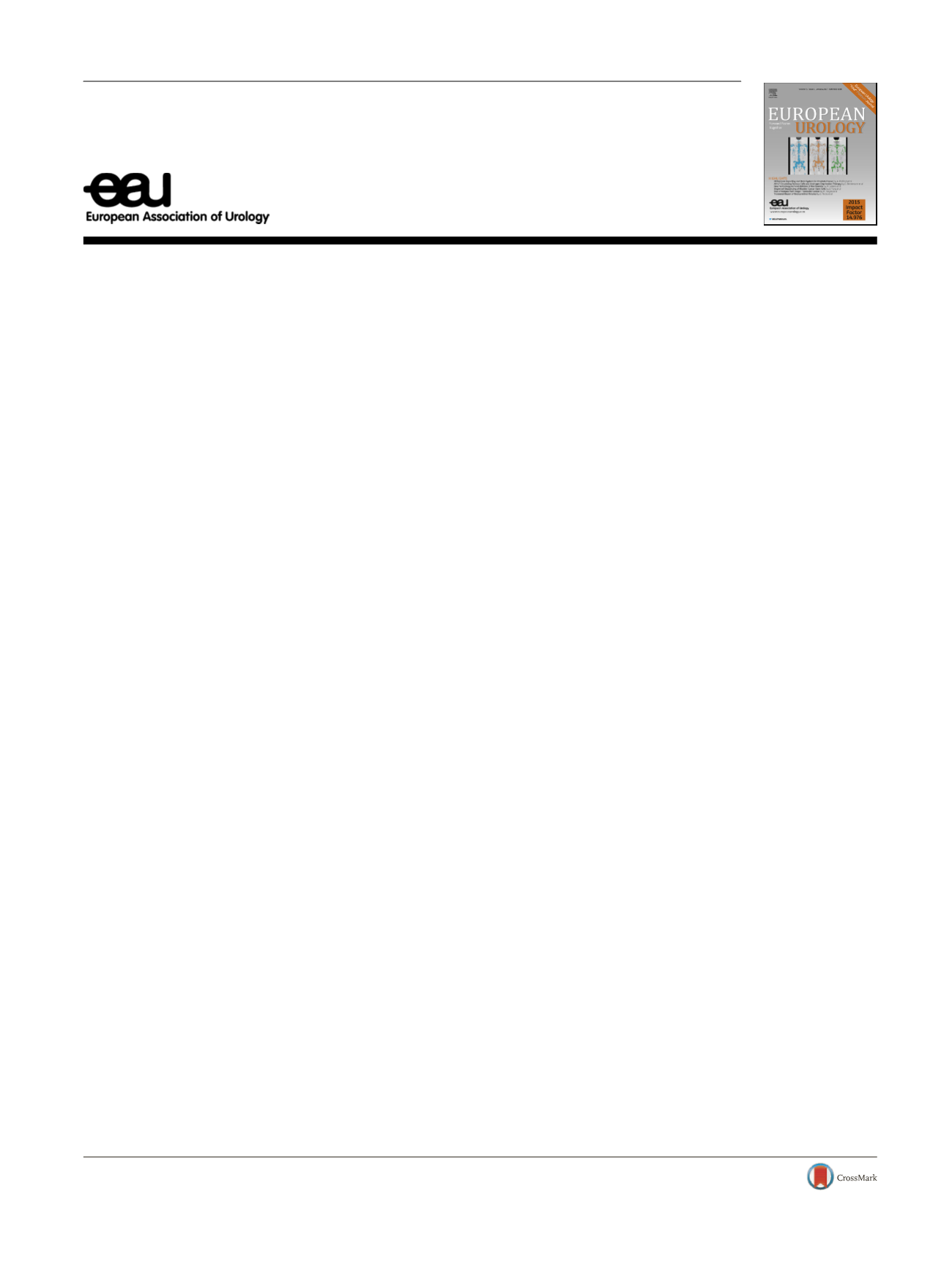

Platinum Priority
–
Editorial
Referring to the article published on pp. 747
–
754 of this issue
Longer Telomere Length and Renal Cell Carcinoma
Jozefina Casuscelli
a , * , A. Ari Hakimi ba
Department of Urology, Ludwig-Maximilians University, Munich, Germany;
b
Urology Service, Department of Surgery, Memorial Sloan Kettering Cancer
Center, New York, NY, USA
Rapid advances in the genotyping methodology have
allowed us to affordably scan single nucleotide polymor-
phisms (SNPs) in the human genome
[1] .SNPs are
alterations in the nucleotide sequence of the DNA, mostly
resulting in synonymous changes of the coding sequence,
and are the most common form of genomic variation. There
are approximately 10 million known SNPs in the human
genome, and the clinical relevance of these variants is often
studied within genome-wide association studies (GWASs).
Indeed, since the first successful publication of a GWAS in
the year 2005, the genome of hundreds and thousands of
humans has been tested to identify variations associated
with different complex traits or diseases.
GWASs have revolutionized the understanding of
disease susceptibility by correlating specific genetic
variations to the overall risk of disease. The identified
variants often, however, account for a relatively low risk of
developing a specific disease and therefore require a large
samples size analyzed in a case
–
control fashion. Further,
functional implications of a given SNP are often challeng-
ing to discern given that they are rarely related to the
known mechanisms of disease development, and also
because a substantial amount of SNPs is located in the
noncoding DNA regions, which are only beginning to be
explored.
Nevertheless, in cancer research, GWASs have been
proved to be an intriguing tool to understand disease
susceptibility. Most of the variations are specific for a given
tissue or cancer, but emerging evidence points to SNPs that
can contribute to more than one type of cancer
[2,3] .For instance, genetic variants conferring longer telomere
length have shown in different GWASs the correlation with
an increased risk for site-specific cancers, such as chronic
lymphocytic leukemia, glioma, neuroblastoma, and lung
and bladder cancer
[4] .Telomeres are located at the end of every chromosome,
and function to protect chromosomes from recombination
and degradation. They are gradually shortened following
every cell division, ultimately leading to senescence and
apoptosis of the cell after a given amount of divisions.
Upregulated telomerase enzyme can maintain the telomere
length, which eventually results in immortalization of cells.
This enzyme is active in the embryonal period, but also
during tumorigenesis, enabling malignant cells to divide
continuously
[5].
Several recent studies including those on renal cell
carcinoma (RCC) demonstrated longer telomere length and
increased telomerase activity in tumor tissues, and proven
association with advanced disease and reduced survival
[6].
In this month
’
s issue of
European Urology
, Machiela and
colleagues
[7]present a meta-analysis of genetic variants
associated with telomere length in peripheral blood
leukocytes and test their utility as inherited biomarkers
for RCC risk. Previous GWAS interrogations of RCC and
telomeres have generated conflicting results, and were
likely to be underpowered and have used less sensitive
methods.
Here, the authors present the findings from six
independent GWASs, all of European Ancestry, analyzing
the genotypes of over 10 000 RCC cases and over
20 000 cancer-free controls. The studied variants were
used as a surrogate of telomere length and were aggregated
to create a genetic risk score to assess genetically inferred
telomere length. To obviate the effects of biases due to
confounders and reverse causation, an analysis of the
association between telomere length and RCC risk was
E U R O P E A N U R O L O GY 7 2 ( 2 0 17 ) 7 5 5 – 7 5 6ava ilable at
www.sciencedirect.comjournal homepage:
www.eu ropeanurology.comDOI of original article:
http://dx.doi.org/10.1016/j.eururo.2017.07.015.
* Corresponding author. Department of Urology, Ludwig-Maximilians University, Marchioninistrasse 15, Munich 81377, Germany. Tel. +49 4400 0;
Fax: +49 4400 78890.
E-mail address:
jozefina.casuscelli@med.uni-muenchen.de(J. Casuscelli).
http://dx.doi.org/10.1016/j.eururo.2017.08.0080302-2838/© 2017 European Association of Urology. Published by Elsevier B.V. All rights reserved.
















